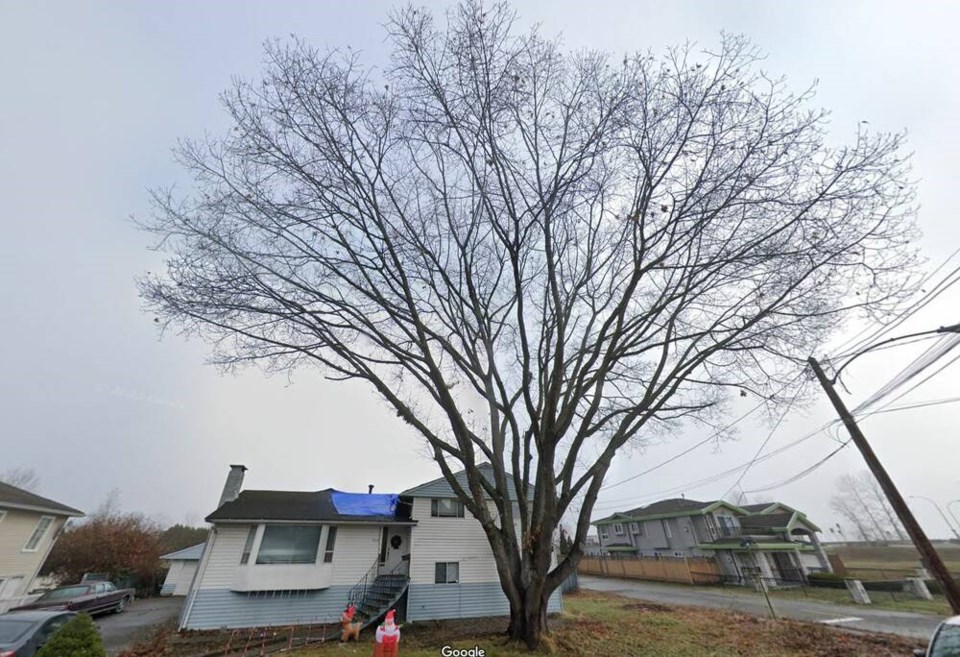A stately oak tree could become the first tree in New West to be protected through a heritage revitalization agreement.
The City of New Westminster has received an application for a heritage revitalization agreement for a six-unit stratified townhouse development at 203 Pembina St. in Queensborough. As part of that project, the applicant would protect and designate a Northern red oak tree on the city’s heritage register.
“Retention of the oak tree through an HRA would be a very unique situation,” said a staff report. “Only one tree in New Westminster is currently listed on the heritage register, and therefore has formal recognition as an individual heritage resource.”
The oak tree is estimated to be more than 60 years old and is about 18.2-metres (60-feet) tall, said the report.
“As a highly visible local landmark, it possesses esthetic heritage value for its significance to the landscape, and the oak tree of such age, size and prominence in Queensborough,” said the report. “It may also possess historical value, given its association with the former fire hall, located south of the property. Based on an interview with the former property owner, firefighters would sit under the tree’s canopy and participated in its maintenance.”
According to the staff report, one of the townhouse units would front Pembina Street and five of the units would be sited at the rear of the property in a separate building. Staff said the units are being configured to support the retention of the oak tree, which has a “significant critical root zone” that needs to be considered in order to ensure its long-term retention.
A shared amenity space for the development’s residents is being proposed for the area around the tree.
At its July 10 meeting, council received a preliminary report about the heritage revitalization agreement. Council directed staff to work with the applicant to prepare a plan of development for the subject property that’s suitable for consideration of first and second readings.
This site’s current zoning allows for a single-detached house, so a rezoning or heritage revitalization agreement is required to build townhouses.
Coun. Tasha Henderson said it’s an interesting idea to design a project around the retention of a tree.
“I really love the idea of the careful planning to maintain this tree in the long term, and that the project is built around the tree rather than sort of starting over and planting new small trees, which we don’t realize the impact of that tree canopy for so many years,” she said. “So I think it’s really innovative and creative. I’m eager to see how this might be a model for other future developments with large mature trees that are really valued by the community.”
Henderson questioned staff anticipate using heritage revitalization agreements to protect more trees in the future.
“If this one goes well, I think it’s certainly something that staff would encourage other applicants to bring forward in the future,” said Jackie Teed, acting director of climate action, planning and development. “It is our first time doing this as an HRA. We do have one other tree protected in the city, which is a heritage tree. So this could be our second one. And it certainly builds on our urban forest strategy. So who knows? It could be a whole new type of HRA we start doing.”
Henderson said it’s neat to think about the city’s heritage beyond buildings and to include the natural environment.
“I really think that that’s a compelling way for us to think about the heritage of this space,” she said. “So, I’m really excited to see this.”
In 2010, Grant Henderson became the first New West resident to place a tree on the city’s heritage register. In keeping with a promise he’d made to his mom to protect a circa-1860 beech tree on the family’s property in the 300 block of Ash Street, he requested the city place the tree on the heritage register.




